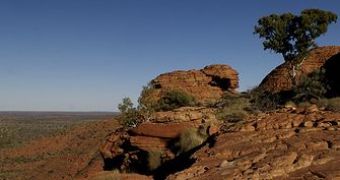Researchers discovered that the Australian outback has a huge CO2 storage potential. To date it already contains 9.7 billion tons of carbon within vegetation, trapped inside leaves and roots. If the area's management strategy is revised it could help the country reduce its greenhouse gas emissions, by absorbing another 1.3 billion tons of carbon by 2050.
This study was made by The Nature Conservancy and the Pew Environment Group. Researchers examined almost 6 million square miles of the outback, containing woodlands, forests and grasslands, in central and northern areas of the country. They concluded that if the native vegetation is supported, land clearing and wild fires controlled and animal grazing improved, estimations of greenhouse gas reduction may become a real achievement. Additionally, this method is less expensive than other carbon reducing solutions and it could also be beneficial to people, as new jobs would be created.
The director of the Wild Australia Program, Dr. Barry Traill said that “due to its enormous size, the Outback environment is able to store huge amounts of carbon, so it serves as a massive pollution bank for Australia and the planet. However, if the wide variety of its plants and trees continue to be cleared or degraded through poor management, stored carbon will be released into the atmosphere, adding to climate pollution.”
The Wild Australia Program is a joint project of the Pew Environment Group and The Nature Conservancy, and their common mission is to protect Australia’s terrestrial and marine environment. “This new and very important report shows that by taking better care of Australia’s Outback, its native plants, woodlands and forests, we have a logical and inexpensive way to cut emissions right in our own backyard,” stressed Dr. Michael Looker from The Nature Conservancy. He added that “to make the cuts in damaging greenhouse emissions that the science says are necessary to limit the impacts of climate change, Australia must take advantage of these practical solutions that are cost effective and available now.”

 14 DAY TRIAL //
14 DAY TRIAL //